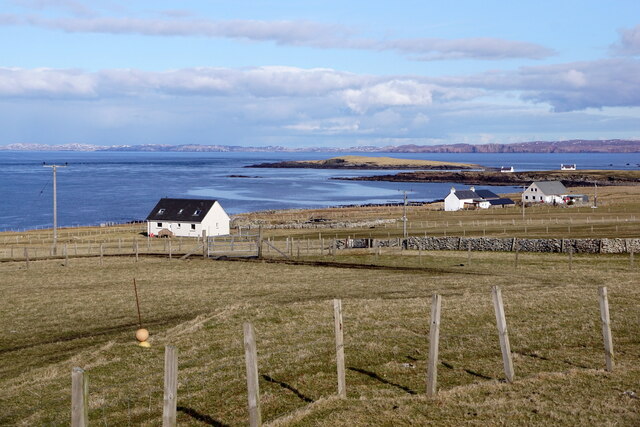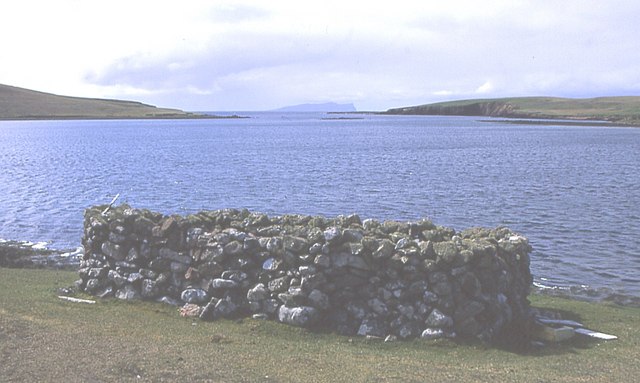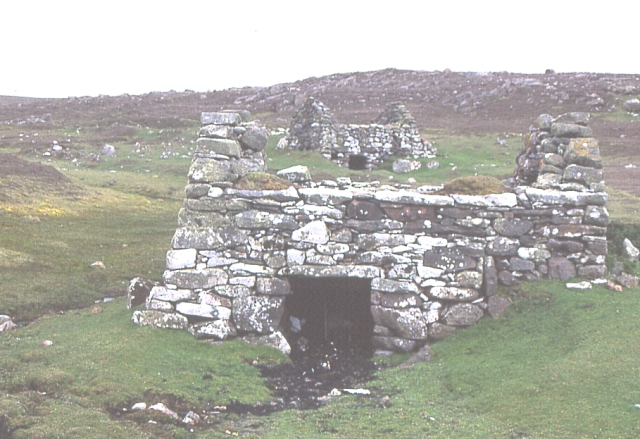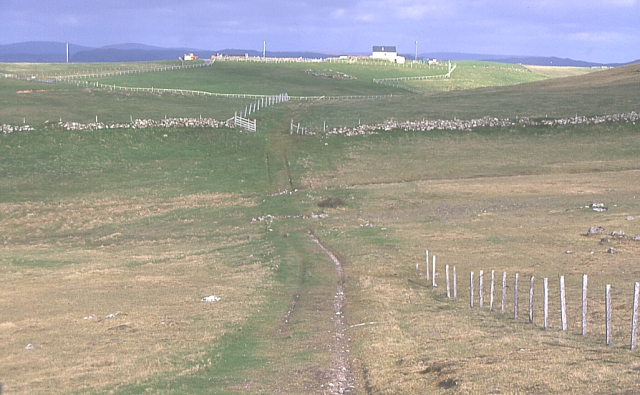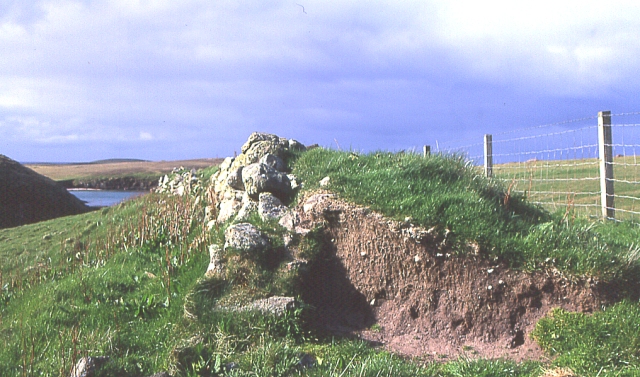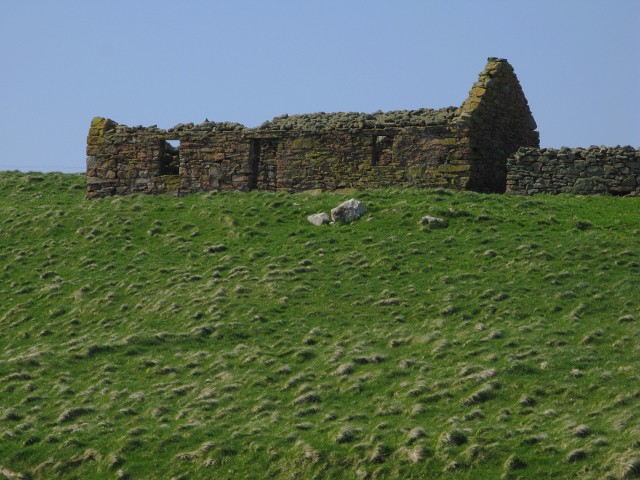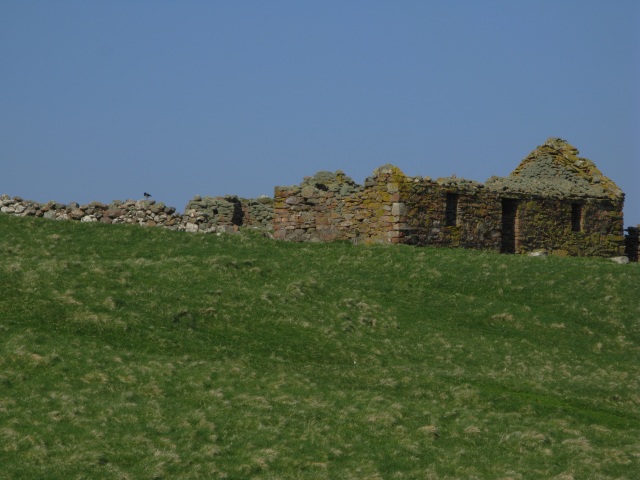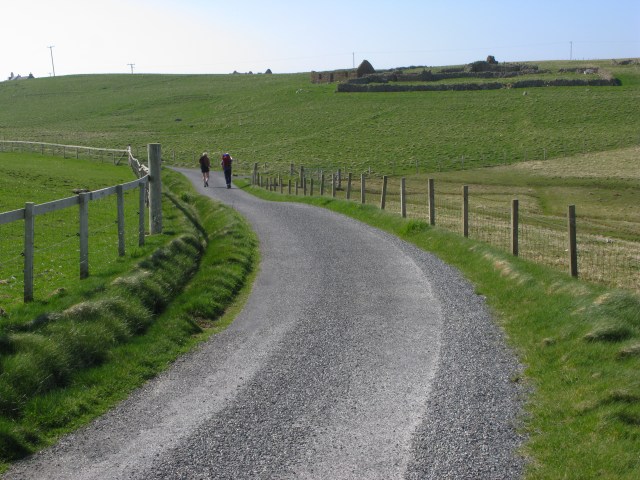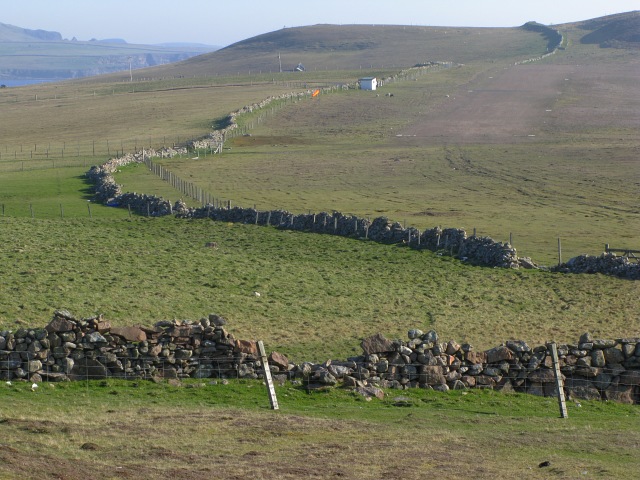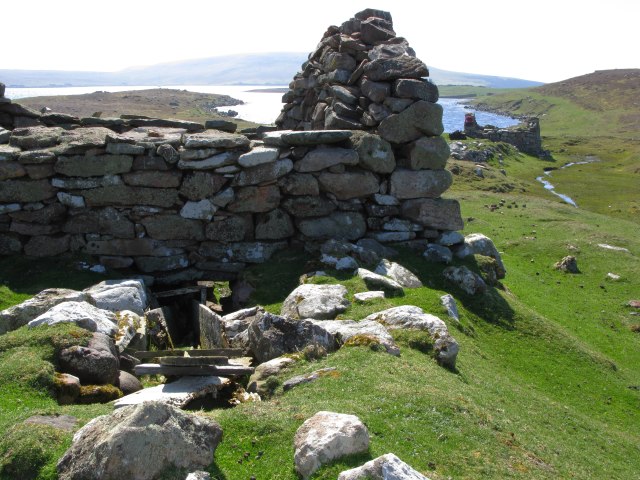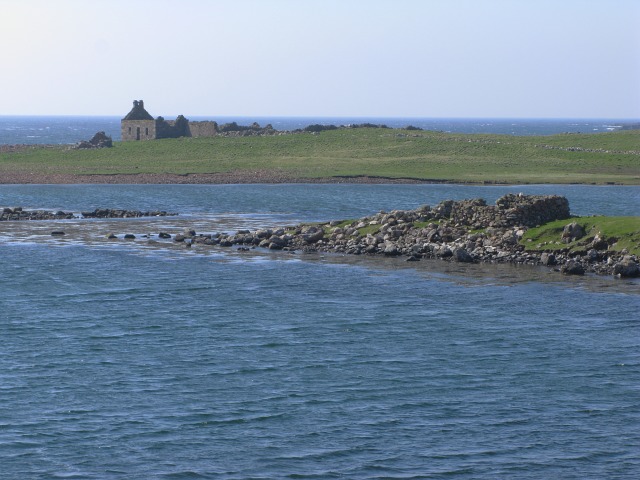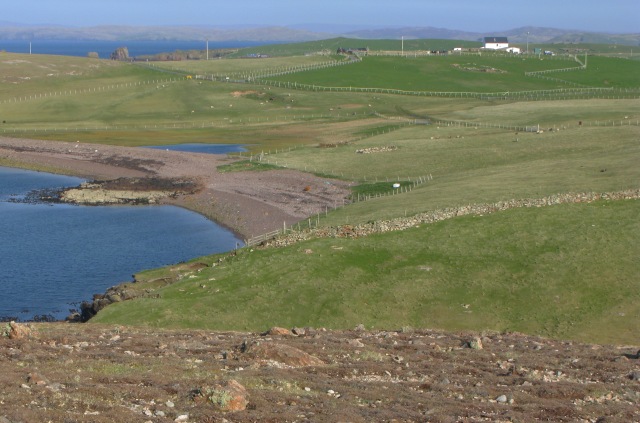Tounafielie
Coastal Feature, Headland, Point in Shetland
Scotland
Tounafielie
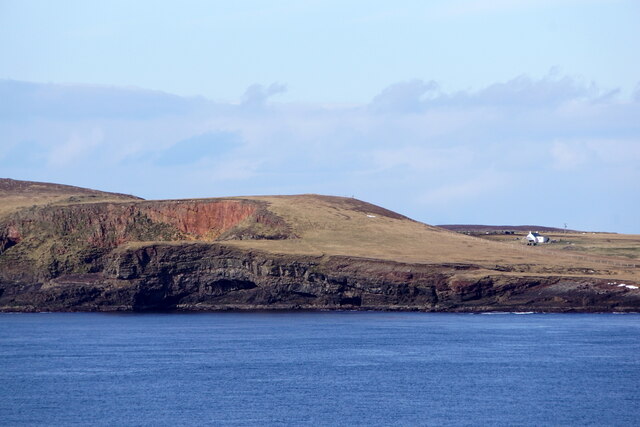
Tounafielie is a prominent coastal feature located on the island of Shetland, in the northernmost part of Scotland. It is a headland or point that juts out into the North Sea, offering breathtaking views of the surrounding landscape.
Situated on the western coast of Shetland, Tounafielie is known for its rugged cliffs, which rise dramatically from the sea and reach heights of up to 100 meters (328 feet). These cliffs are composed of red sandstone, which adds to the striking visual appeal of the area. The headland is also characterized by its steep slopes and rocky terrain, making it a popular spot for hikers and nature enthusiasts.
Tounafielie is home to a diverse range of flora and fauna, with seabirds nesting on its cliffs and marine life thriving in the surrounding waters. Visitors to the area may have the opportunity to spot species such as puffins, guillemots, and razorbills, as well as seals and dolphins swimming offshore.
The headland is easily accessible by foot, with several walking trails leading to Tounafielie from nearby villages. Its location on the western coast means that it is exposed to the prevailing winds, creating a wild and untamed atmosphere. On a clear day, visitors can enjoy panoramic views of the North Sea and the surrounding Shetland Isles.
Tounafielie is not only a place of natural beauty but also of historical significance. The headland is dotted with ancient ruins and archaeological sites, providing insights into the island's rich history. Overall, Tounafielie is a captivating coastal feature that showcases the rugged beauty and natural wonders of Shetland.
If you have any feedback on the listing, please let us know in the comments section below.
Tounafielie Images
Images are sourced within 2km of 60.315443/-1.6940906 or Grid Reference HU1759. Thanks to Geograph Open Source API. All images are credited.
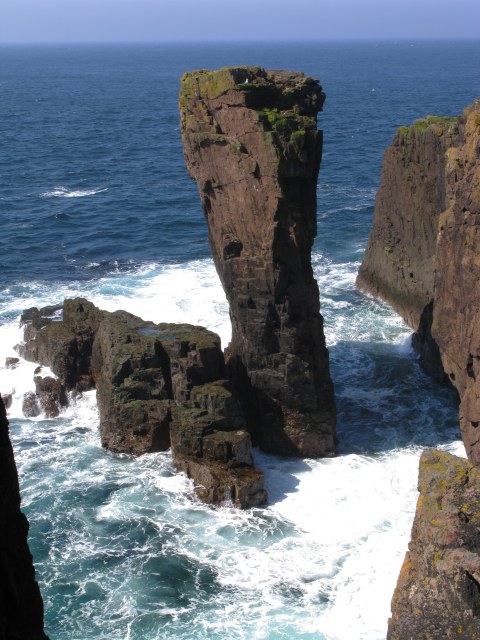
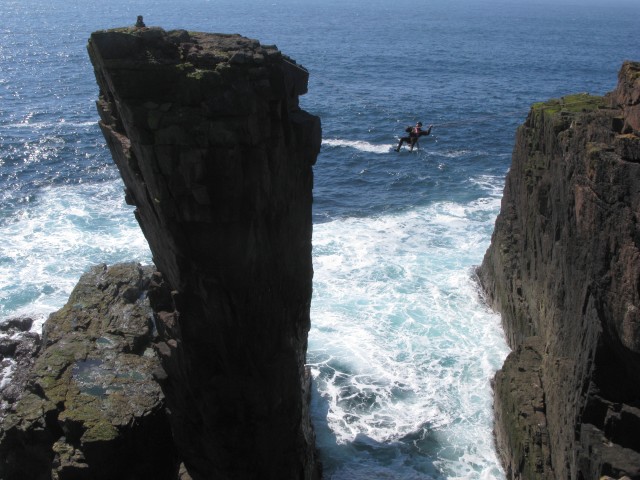
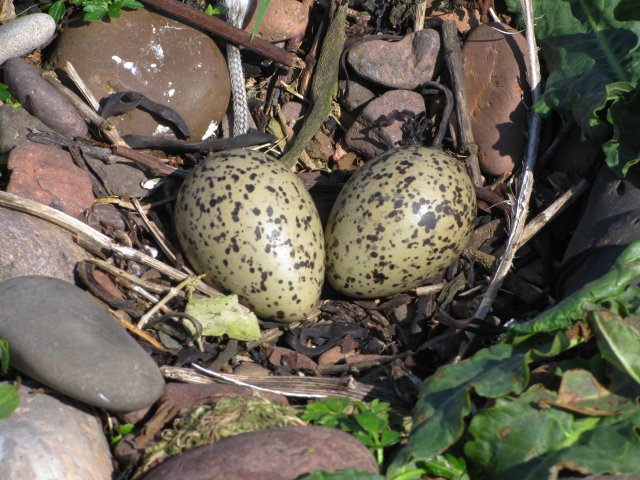
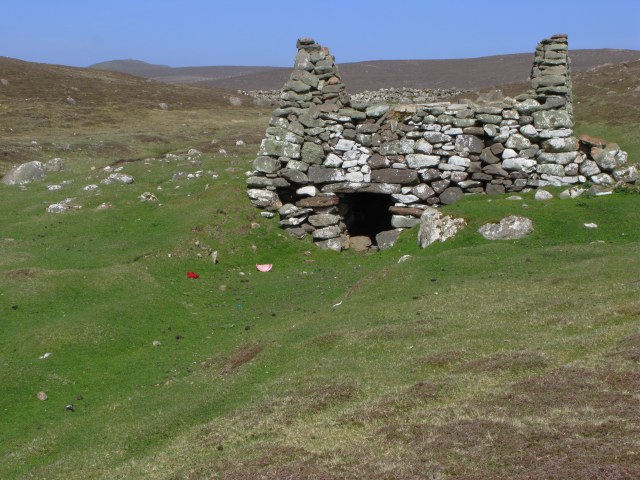
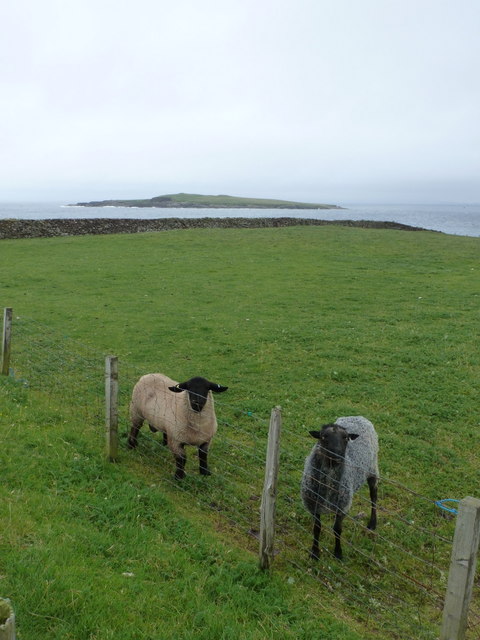
Tounafielie is located at Grid Ref: HU1759 (Lat: 60.315443, Lng: -1.6940906)
Unitary Authority: Shetland Islands
Police Authority: Highlands and Islands
What 3 Words
///concerned.voices.difficult. Near Walls, Shetland Islands
Nearby Locations
Related Wikis
Papa Stour Airstrip
Papa Stour Airstrip is a small airstrip in the village of Biggings on the island of Papa Stour. Shetland, Scotland. == History == Papa Stour Airstrip opened...
Biggings
Biggings is a village on the island of Papa Stour, in Shetland, Scotland. Papa Stour's church is situated at the south of Biggings. A homestead of Duke...
Forewick Holm
Forewick Holm is a 1-hectare (2.5-acre) island in the Sound of Papa in the Shetland islands, Scotland. Located between Papa Stour and the Sandness peninsula...
Papa Stour
Papa Stour (Scots: Papa Stour) is one of the Shetland Islands in Scotland, with a population of under fifteen people, some of whom immigrated after an...
Nearby Amenities
Located within 500m of 60.315443,-1.6940906Have you been to Tounafielie?
Leave your review of Tounafielie below (or comments, questions and feedback).
